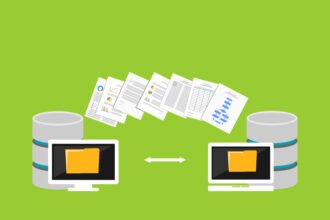BI implementations are stuck in a rut. This rut has short-circuited many small to medium size businesses’ (SMB) new BI initiatives.
BI implementations are stuck in a rut. This rut has short-circuited many small to medium size businesses’ (SMB) new BI initiatives. And, it has thwarted existing BI applications at large enterprises that are trying to be responsive to new and changing business analytic requirements.
Business people at SMBs sometimes reject their BI projects before they even deploy because they have already decided that they are not responsive to their analytical needs. So, they revert to their old standby: spreadsheets. Large enterprises likely have one or more BI applications already in place, but they often face large work backlogs of business requests that business people just cannot wait for, so they also revert to spreadsheets. In both scenarios, enterprises are not reaping the business ROI they should have achieved from their BI initiatives.
BI vendors, of course, have easy answers to these problems: buy their products and this backlog will vanish because it only takes minutes to build a new dashboard, report or complete business analysis with their tool. Oh really? Currently the latest BI tools are pitched as self-service BI. It is tempting for enterprises to buy into the self-service BI hype. Business people feel that they can be freed from the IT bottleneck and IT feels that business folks will limit their requests if they have these tools.
Emerging technologies offered through each new generation of BI tools often do make it easier and faster for people to develop BI analytics, but that is only one ingredient of busting the BI backlog. And it may not even be the most important ingredient.
What are the problems?
A few of the stumbling blocks to greater responsiveness and higher business ROI from BI:
- Self-service BI approaches, such as data discovery, data visualization and ad-hoc query tools, often are easy enough for business people to use, but without easy access to comprehensive, consistent, clean and current data the resulting BI analysis is not useful for business decision making. The old computer geek term GIGO (garbage in, garbage out) is appropriate.
- Not all BI tools are business user-friendly, but often it is the power user that uses these tools and not the mainstream business user. Do business people, other than power users, really have time to master a powerful but complex BI tool?
- The 80/20 rule applies to business requests for BI analytics. Only 20% of the BI requests need to become ongoing production analytics while the rest are either exploratory or one-time types of analysis.
- In general, IT groups in large enterprises have adopted a formal project or SDLC (Systems Development Life-Cycle) methodology to design, develop and deploy their applications. These methodologies have a formal business requirements process that is great at documenting requirements, but has a tendency to take a long time. What typically happens is by the time the process has completed the business has changed, dropped or created new requirements.








